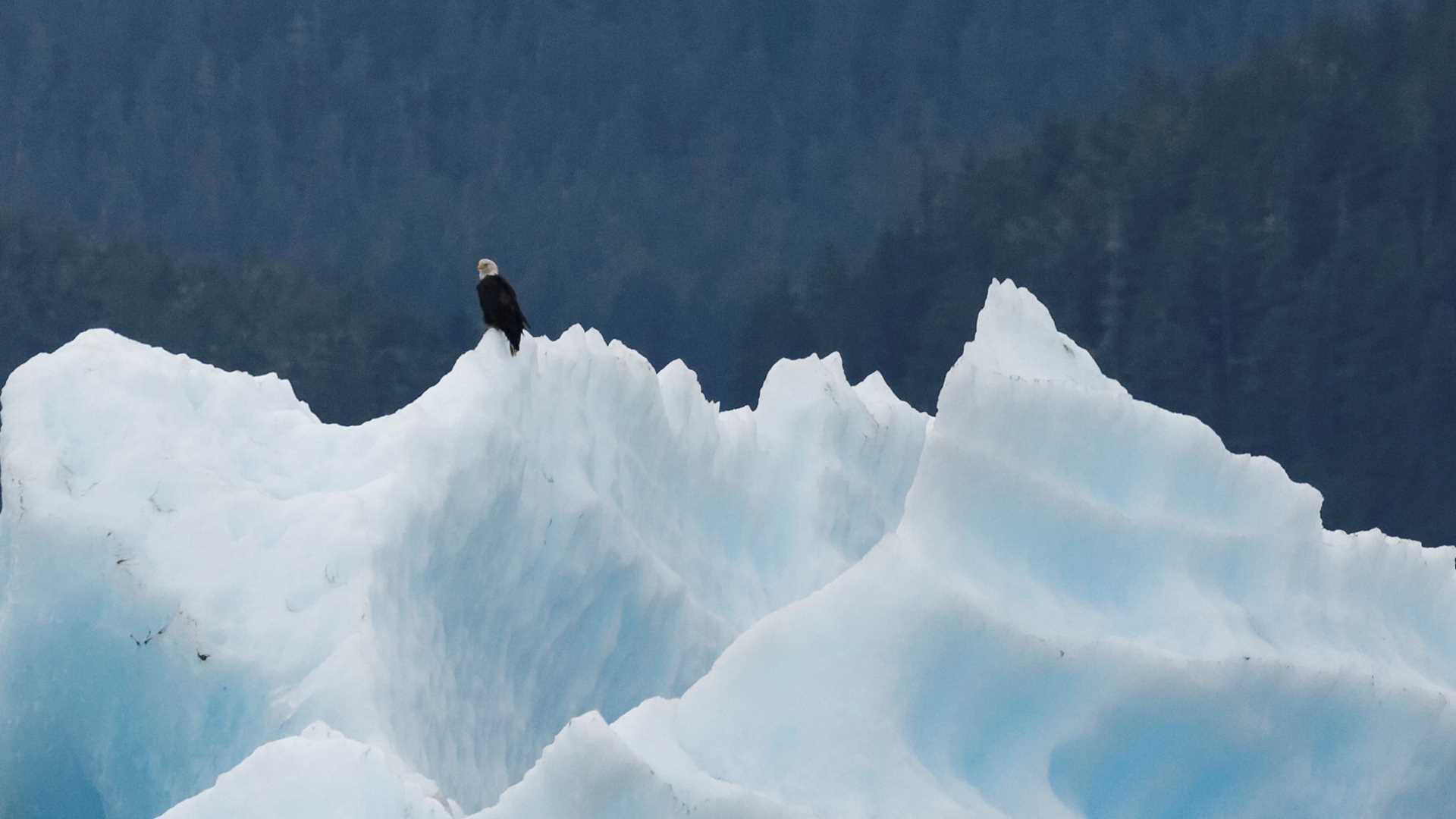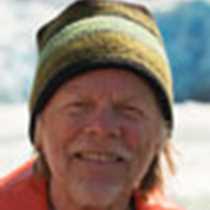The norm in Southeast Alaska is rain, and this morning was certainly quite normal. But the rain did not deter the intrepid explorers on board the National Geographic Sea Lion as we all enthusiastically embraced the rain as the only way to be properly introduced to the world’s largest expanse of coastal temperate rain forest.
We slowly steamed through Tracy Arm and stopped about 3 miles from the face of Sawyer Glacier. About 1,500 years ago, the path we traveled was a solid glacier; the last 5 miles to the glacier were ice until only about 270 years ago. All boarded Zodiacs for the last 3 miles, weaving amongst large and small chunks of ice that had broken away from the glacier’s face. The vivid shades of blue from ice centuries old were bright beacons in a field of grays and whites.
Numerous mother-pup pairs of harbor seals were observed resting on ice floes, watching us as avidly as we watched them. Most pups were nearly weened and ready to set off on their first exploration of the world.
Several guests heard and witnessed the glacier calving and some saw a very large burst of fresh water rushing down the valley wall that had broken through a natural blockage high above. All returned to the ship quite wet and chilled, but we were met with hot chocolate and happy for a most proper introduction to Southeast Alaska.
During a delicious and hearty lunch, we sailed to Williams Cove. Along the way, we watched a solitary black bear foraging in the intertidal zone, calmly turning over rocks to reveal and consume barnacles and mussels. At the top of a nearby tree, a stately eagle watched us and the bear.
The calm Williams Cove provided a perfect location for kayaking, stand-up paddle boarding, and hiking through the beautiful secondary growth coastal rain forest. Yes, the hike was wet and muddy, but provided yet another vivid impression of why the coastal rain forest is so special. Luxurious cover of ground plants, some edible, others not so much. Tall, stately western cedars, western hemlock, and Sitka spruce, many draped with numerous species of lichens. The quiet was deafening. A flattened section of grassland indicated where a bear had rolled around or rested, a distinctive calling card.
After a full afternoon, we returned to the ship and another delicious meal, followed by a presentation on glaciers. Then to bed after a first day of excitement.







